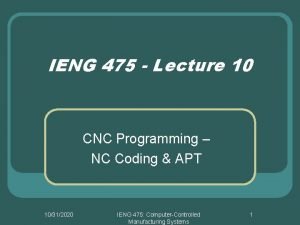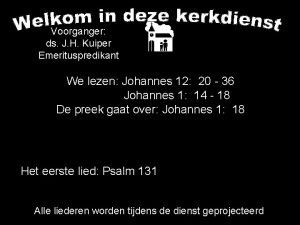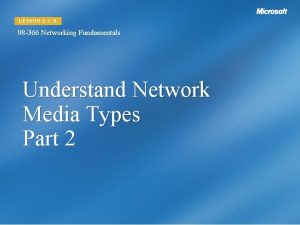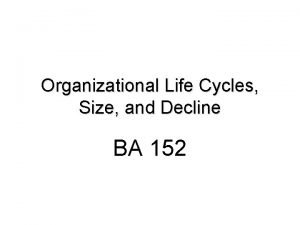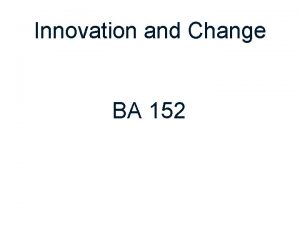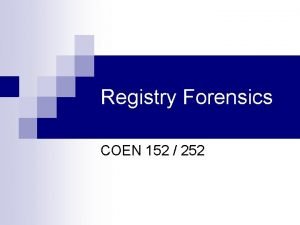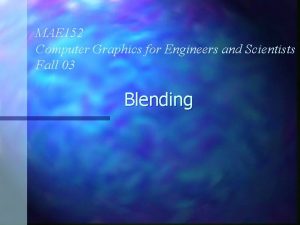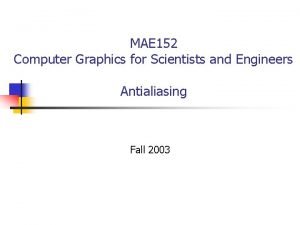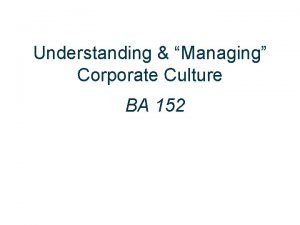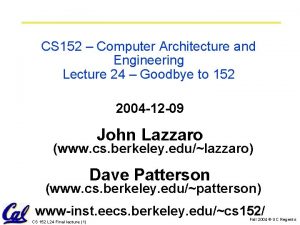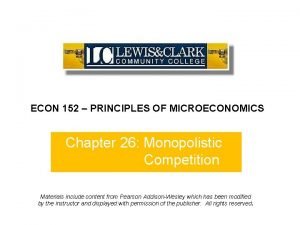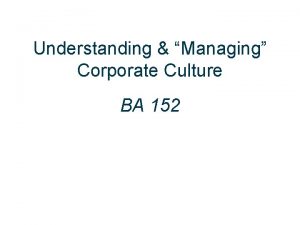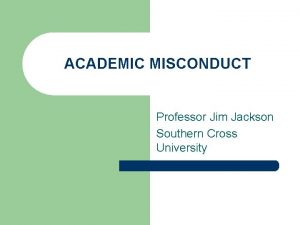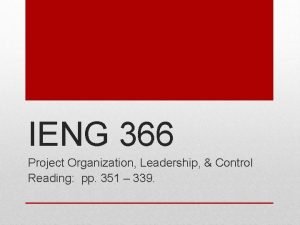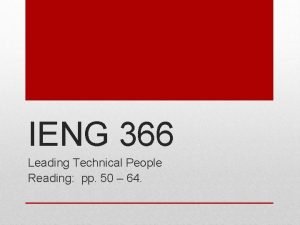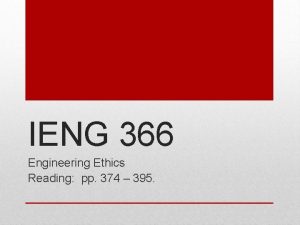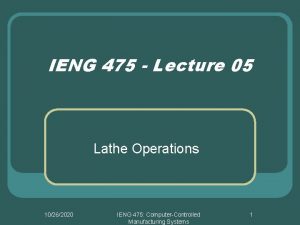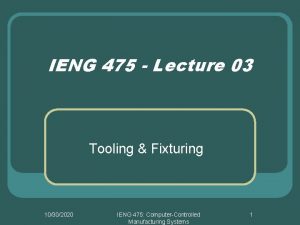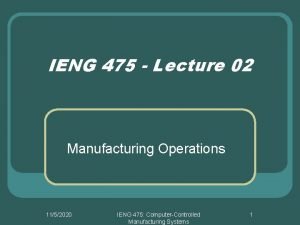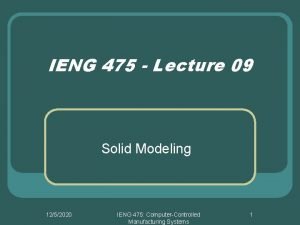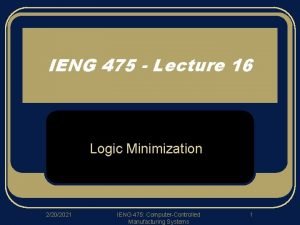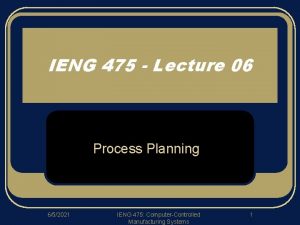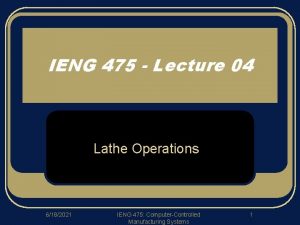IENG 366 Organizing Reading pp 152 170 ORGANIZING
























- Slides: 24

IENG 366 Organizing Reading: pp. 152 – 170.

ORGANIZING … is (1) the identification and classification of required activities; (2) the grouping of activities necessary to attain objectives; (3) the assignment of each grouping to a manager with the authority necessary to supervise it; and (4) the provision for coordination horizontally … and vertically. . . in the organization structure.

• Sole Proprietorship • Partnership • Limited Liability Company • Corporation • Cooperative Organizing: Legal Forms

Sole Proprietorship • Owner makes all decisions • Owner has unlimited liability for all business debts • Few legal restrictions • Profits are taxed only once • Taxation is on the individual tax schedule in U. S. Organizing: Legal Forms

Partnership • Two or more partners • Partners have unlimited liability for partnership debts • Easy to organize • Profits are taxed only once per partner • Taxation is on the individual tax schedule in U. S. Organizing: Legal Forms

Limited Partnership • At least one General Partner • General partner has unlimited liability for partnership debts • One or more Limited Partners • Limited partners have limited liability for partnership debts – up to the extent of their investment in the company • Profits are taxed only once per partner • Firm files a tax return, but does NOT pay taxes • Taxation for each partner is on the individual tax schedule in the U. S. Organizing: Legal Forms

Limited Liability Company • One or more Members (Owners) • Owners have limited personal liability for the debts and actions of the firm – up to the extent of their investment in the company • Business is treated as a separate entity from its members • Flexibility to elect to file member taxes on corporate schedule, if the firm chooses to file as a C corporation • Flexibility to file member taxes on the personal schedule, if the firm chooses to file as an S corporation • Profits are taxed only once per member • Firm files a tax return, but does NOT pay taxes • Taxation for each member is on the individual tax schedule in the U. S. Organizing: Legal Forms

Corporation • A legal entity that: *Subchapter S Corporations pass through the profits to their individual shareholder’s tax returns – they are taxed once. • Has a perpetual life • Files an annual report and tax returns • Is subject to special state and federal controls • Share Holders have no liability for the debts of the company – beyond the value of their stock • Profits are taxed twice* • Taxation is on the corporate tax schedule for the entity’s profits • Taxation of the share holder’s after-tax dividend distributions is on the individual tax schedule in U. S. • Harder and more expensive to establish, but … • Easier to raise money • Easier to transfer ownership (selling stock) • Easier to change management Organizing: Legal Forms

Cooperatives • Ownership is by users & customers (Members) • Each member buys an initial share in the firm • Earnings of the firm are distributed in proportion to patronage • Share holders may cast one vote to elect a Board Member • Board Members run and manage the organization • Distributed earnings are usually tax free • Liabilities of the cooperative are limited to the value of it’s assets Organizing: Legal Forms

Design the load-bearing parts of the structure • Establish the Key Activities: • In what area is excellence required to obtain the company’s objectives? • In what areas would lack of performance endanger the results/survival of the enterprise? • What are the values that are truly important to us in this company? • Analyze the Decisions and Relations: • What decisions are needed to attain effectiveness in key activities? • What crucial relationship(s) must be easy, accessible and central to the unit to assure the success and effectiveness of it’s contribution? Organizing: Design by Key Activities

• Basic • Functional • Product • Geographic • Mixed • Matrix (discussed later in the text) Organizing: Patterns of Departmentation

Figure 6 -1 Methods of departmentation: (a) Basic organization. (b) Functional departmentation. Organizing Patterns: Basic & Functional

Figure 6 -2 Methods of departmentation: (a) Product departmentation. (b) Geographic departmentation. Organizing Patterns: Product & Geographic

Figure 6 -3 Example of mixed departmentation. Organizing Patterns: Mixed Departmentation

Figure 6 -4 Control spans of (a) four and (b) eight compared. M, manager; w, worker. Organizing: Span of Control

Necessary Limits to Span of Control • Subordinate training • Nature of jobs • Rate of change of activities and personnel • Clarity of delegation • Staff assistance Organizing: Span of Control

Line • Superior/Subordinate relationships. Typically represented vertically in organizational charts Staff • Advisory in nature, degree of influence may vary. Typically represented horizontally in organization charts • • Provide advice on request Recommendations when appropriate Must be consulted by line but have no direct authority Concurring authority – veto authority over line Functional • Specialized Authority • As binding as line authority • Usually procedural • Budget formats • Computer system operations Organizing: Line and Staff Relationships

Staff (Advisory) Divisional HR HR Director (Functional) Divisional HR Line (Chain of Command) Organizing: Line and Staff Relationships

Staff (subtypes) • Service • Centralized support functions for entire organization • Custodial • Security • Medical • Personal support functions - NO formal authority • Authority is derived from acting in the name of the manager • Provide assistance to address managerial overload conditions • Periodic overloads • Ad hoc situations Organizing: Line and Staff Relationships

Functional Groups Project Teams Project Management Design Management Mfg Management Personnel Management Purchasing Management Accounting Management Manager Project A Design Eng Mfg Eng Personnel Purchasing Accounting Manager Project B Design Eng Mfg Eng Personnel Purchasing Accounting Manager Project C Design Eng Mfg Eng Personnel Purchasing Accounting Organizing Patterns: Matrix Organizations

• • • Small group of people Serve interests of its members Exchange ideas freely and clearly Have common goals Committed to achieving goals Each team member treated equally Organizing: Teams

Common approaches to building team performance • Establish urgency and direction. Team must have a clear objective. • Select members based on skill and skill potential, not personalities. • Pay particular attention to first meetings and actions. • Set some clear rules of behavior. • Set and seize upon a few, immediate, performance-oriented tasks and goals. • Challenge the group regularly with fresh facts and information. • Spend time together. • Use positive feedback, recognition, and reward. Organizing: Teams

Organizational workers will require higher level skills • • Visualization Conceptual thinking Process knowledge Statistical inference Oral and visual communication Attentiveness Individual responsibility Information Technology: Work Force Impact

Questions & Issues? IENG 366 Engineering Management
 5 letter words with ieng
5 letter words with ieng 98 366
98 366 Ps 366
Ps 366 Na jednom kraju bakrene cijevi duljine 366 m
Na jednom kraju bakrene cijevi duljine 366 m Sick sentences pobble
Sick sentences pobble Opwekking 366
Opwekking 366 98 366
98 366 92 rounded to the nearest ten
92 rounded to the nearest ten While reading activities
While reading activities Round to the nearest ten thousand
Round to the nearest ten thousand Ba 152
Ba 152 Ba 152
Ba 152 Gfi 152
Gfi 152 Ntuser.dat file
Ntuser.dat file Which layer of the osi model includes vlans
Which layer of the osi model includes vlans Blending function in computer graphics
Blending function in computer graphics Mae 152
Mae 152 Plasa
Plasa Ece 152
Ece 152 Przedszkole 152 łódź
Przedszkole 152 łódź Ba 152
Ba 152 Cs 152 stanford
Cs 152 stanford Econ 152
Econ 152 Ba 152
Ba 152 Law society of tasmania v richardson
Law society of tasmania v richardson
